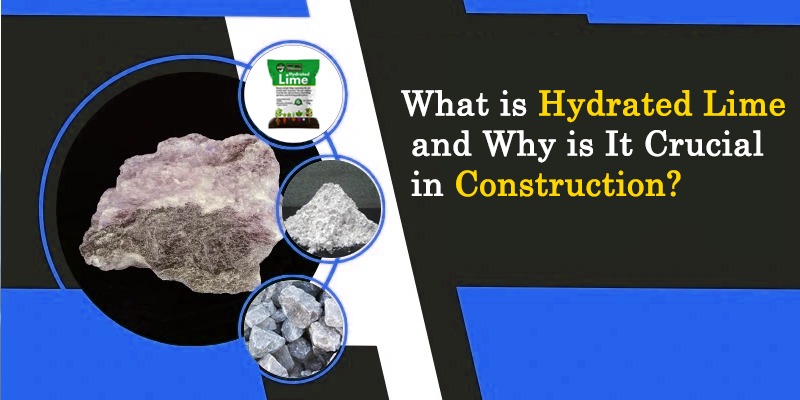
What is Hydrated Lime and Why is it important in construction?
Hydrated lime in construction is a name that comes up frequently when discussing durable and sustainable building materials, and for good reason. Hydrated lime is also known as calcium hydroxide, and it is one of the most flexible materials used in construction for centuries. But why is it so relevant today? Let's explore what hydrated lime is, how it's made, and why it plays such an important role in contemporary construction projects.
What is Hydrated Lime?
Hydrated lime (Ca(OH)₂) is the end product when slaking hydrated lime (calcium oxide) in the presence of water. The process creates a fine, dry powder product that is easy to work with and highly reactive. The slaking process improves that quality, making calcium hydroxide for construction highly versatile and effective for various uses, including mortars, plaster, bulk filler, and soil stabilization.
Benefits of Hydrated Lime in Construction
There are many important benefits of using hydrated lime in construction, both beneficial to the built structure and to the environment. The primary benefits are
1. Improved Workability
Hydrated lime improves the workability of mortars and plasters, making the mixture smoother and more plastic for a better application and bond, especially with masonry.
2. Durability
Calcium hydroxide is used for the construction of structures known for their lasting strength. Hydrated lime improves the weather resistance, which reduces the chance that there will be cracks and degradation over the years.
3. Water retention
As a strong alkaline agent, hydrated lime in construction has natural fungicidal and antibacterial characteristics that will help prevent mold and mildew in walls or foundations.
5. Environmental Friendliness/Affordability/Sustainability
Unlike many synthetic alternatives, calcium hydroxide is more friendly to the environment and absorbs CO₂ over time, providing an opportunity to cut down on greenhouse gases.
Common Uses of Calcium Hydroxide for Construction
Hydrated lime isn’t just a niche material—it's used across a wide range of construction applications:
- Mortar and Plaster: Enhances flexibility, reduces cracking, and improves longevity.
- Soil Stabilization: Strengthens soil for road construction and foundations.
- Whitewashing and Lime Paint: Provides a breathable, antibacterial coating for walls.
- Water Treatment: Used in construction sites for pH control and purification.
In each case, the addition of calcium hydroxide for construction brings both practical and long-term benefits that builders and engineers highly value.
Why Choose Hydrated Lime in Modern Projects?
With construction practices moving to sustainability, longevity, and human health & safety, materials and processes such as hydrated lime in construction are worth another look. Hydrated lime fits into the green building movement like a glove but is also an easy and cost-effective solution for construction projects of all sizes.
From repairing a historic structure to creating a new sustainable building, calcium hydroxide for construction is a trustworthy companion in the world of construction, offering a traditional material based on previous knowledge and practices merged with modern-day building evolution.
Conclusion
In an industry where material integrity is a main actor in the safe and durable performance of structures, hydrated lime in construction is one of the best-known and most trusted allies. Its inherent and advantageous features and benefits ensure it belongs in any builder's catalogue. As builders search for sustainable and durable solutions, calcium hydroxide in construction will continue to be a top performer!